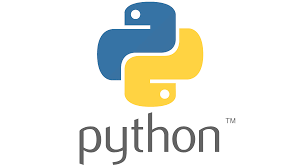
Let’s look at Python threads first before presenting the idea of multithreading.
Threads:
Threads are quick processes (smaller versions of larger processes) that can operate concurrently and in parallel with one another, with each thread capable of carrying out a specific task. Processes frequently house threads. Within a single process, several threads may exist. Threads share memory and the state of the process within the same process.
Types Of Thread:
There are two kinds of thread:
- Kernel-level threads
- User level threads
In the context of multithreading, the term “kernel-level threads” refers to threads that are managed and scheduled directly by the operating system’s kernel. These threads are also known as “system-level threads” or “native threads.”
On the other hand, “user-level threads” are threads that are managed and scheduled by a user-level library or program, rather than by the operating system’s kernel.
What is Multithreading?
By swiftly switching between threads using a CPU, multithreading is a threading technique used in Python programming to run many threads simultaneously (called context switching). Additionally, it enables sharing of its data space with the primary threads inside a process, which communicate and share information more easily than separate processes. The goal of multithreading is to carry out numerous processes concurrently, which improves the application’s rendering and performance.
Python Multithreading Advantages:
The advantages of writing a multithreaded Python application are as follows:
- It guarantees efficient use of computer system resources.
- Applications using several threads are more responsive.
- It is more inexpensive because it distributes resources and its state with child threads.
- Due to similarities, the multiprocessor design is more efficient.
- By running several threads simultaneously, it saves time.
- To store several threads, the system does not need a lot of memory.
Python uses the threading module to provide multithreading. Python’s threading module has several functions and methods that make multithreading simple to create.
Before using the threading module, we would like to first introduce you to the time module, which contains the time(), ctime(), etc. functions. The time.time() function can be used to get the current system time as a floating point value, which represents the number of seconds since the epoch (the beginning of time for the operating system). The time.ctime() function can be used to convert this value to a human-readable string.
Example:
import threading
import time
# Define a function for the thread
def print_time( threadName, delay):
count = 0
while count < 5:
time.sleep(delay)
count += 1
print( threadName, time.ctime(time.time()) )
# Create two threads as follows
try:
thread.start_new_thread( print_time, ("Thread-1", 2, ) )
thread.start_new_thread( print_time, ("Thread-2", 4, ) )
except:
print ("Error: unable to start thread")
while 1:
passWe imported the threading module using import threading statement and we also imported the time module. To create a new thread, we create an object of the Thread class.
It contains the target function, argument, and kwargs as the parameter in the Thread() class.
- Target: It defines the function name that is executed by the thread.
- Args: It defines the arguments that are passed to the target function name.
We shall see more about the Thread class in the next lesson.
Note: also read about Python File Operations
Follow Me
Please follow me to read my latest post on programming and technology if you like my post.
https://www.instagram.com/coderz.py/
https://www.facebook.com/coderz.py
Staying up to the mark is what defines me. Hi all! I’m Rabecca Fatima a keen learner, great enthusiast, ready to take new challenges as stepping stones towards flying colors.
Leave a Comment
You must be logged in to post a comment.